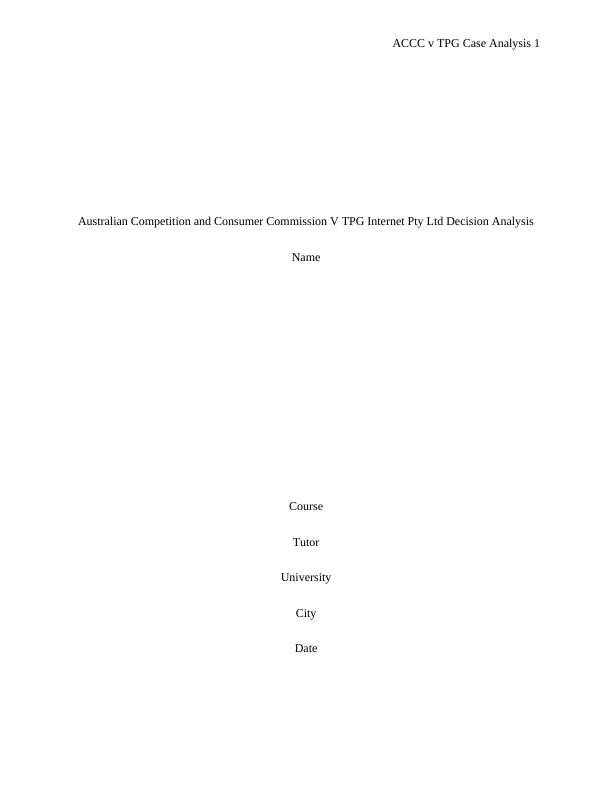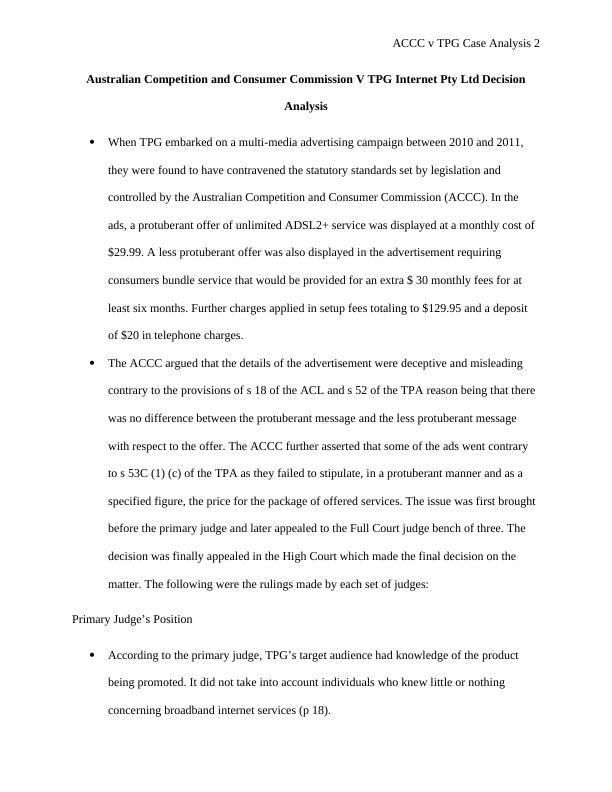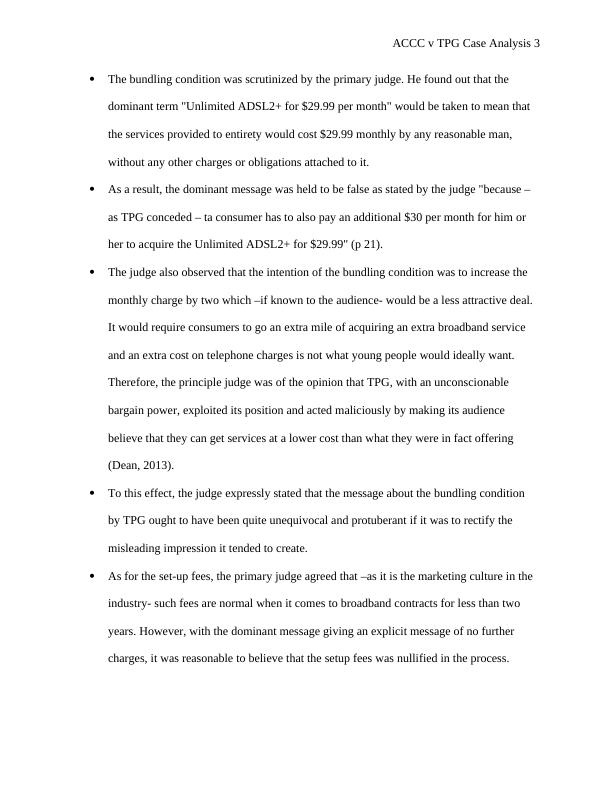ACCC v TPG Case Analysis: Misleading Ads and Legal Rulings
Write a report on the 'ratio' of a decision of the High Court of Australia in response to specific questions. The report should be submitted as a joint submission by a group of 3-4 students.
7 Pages1556 Words353 Views
Added on 2023-06-04
About This Document
This article analyzes the legal battle between the Australian Competition and Consumer Commission (ACCC) and TPG Internet Pty Ltd over misleading ads for unlimited ADSL2+ service. The article discusses the rulings made by the primary judge, Full Court judges, and High Court panel. The primary judge found TPG's ads to be deceptive and misleading, while the Full Court judges disagreed. The High Court panel reinstated the primary judge's ruling and the $2 million pecuniary penalty was reinstated.
ACCC v TPG Case Analysis: Misleading Ads and Legal Rulings
Write a report on the 'ratio' of a decision of the High Court of Australia in response to specific questions. The report should be submitted as a joint submission by a group of 3-4 students.
Added on 2023-06-04
ShareRelated Documents
End of preview
Want to access all the pages? Upload your documents or become a member.
Misleading and Deceptive Advertisements: ACCC v TPG Case Study
|13
|2611
|341
ACCC v TPG Internet Pty Ltd: A Case Study
|7
|1805
|173
Reasoning and Decision of all Three Courts | Assignment
|7
|1483
|244
Australian Competition and Consumer Commission | Assignment
|10
|2061
|47
Business law Report - ACCC vs TPG internet Pty Ltd
|9
|1593
|33
Misleading and Deceptive Advertising by TPG Internet Pty Ltd
|6
|1585
|391



